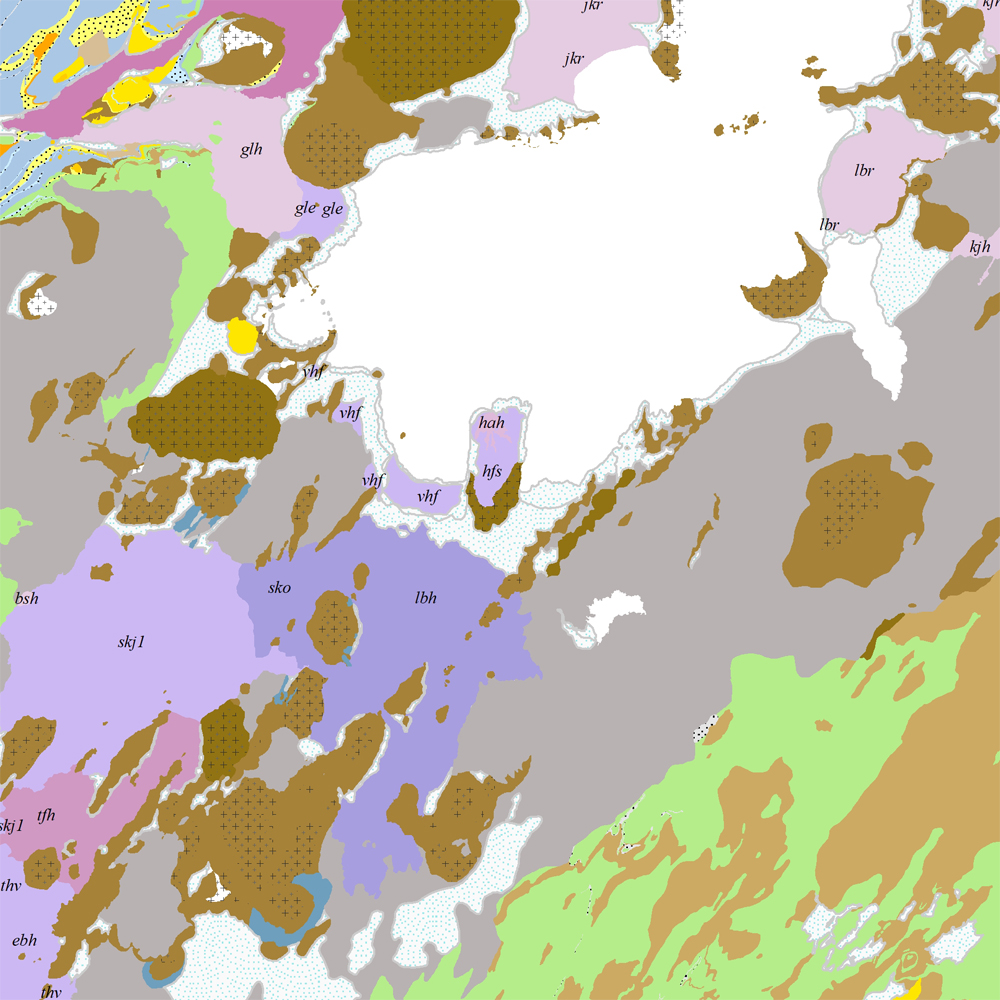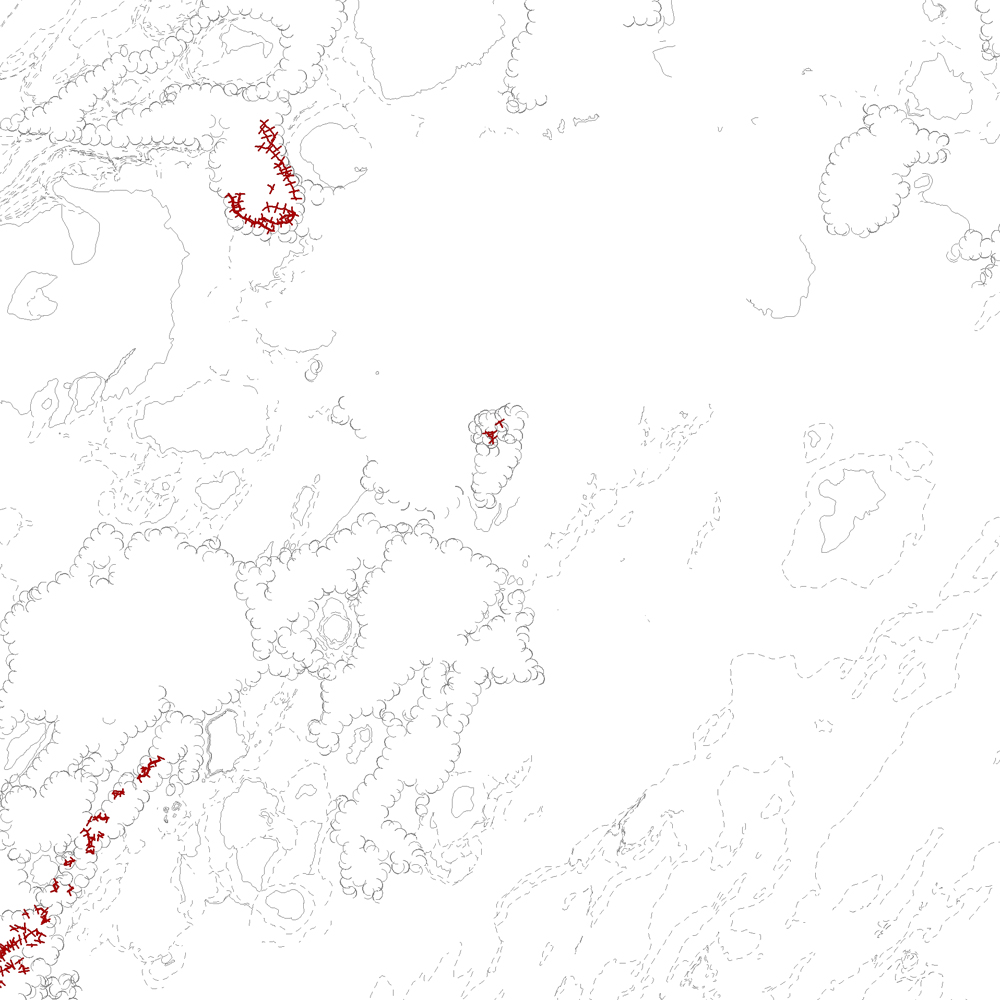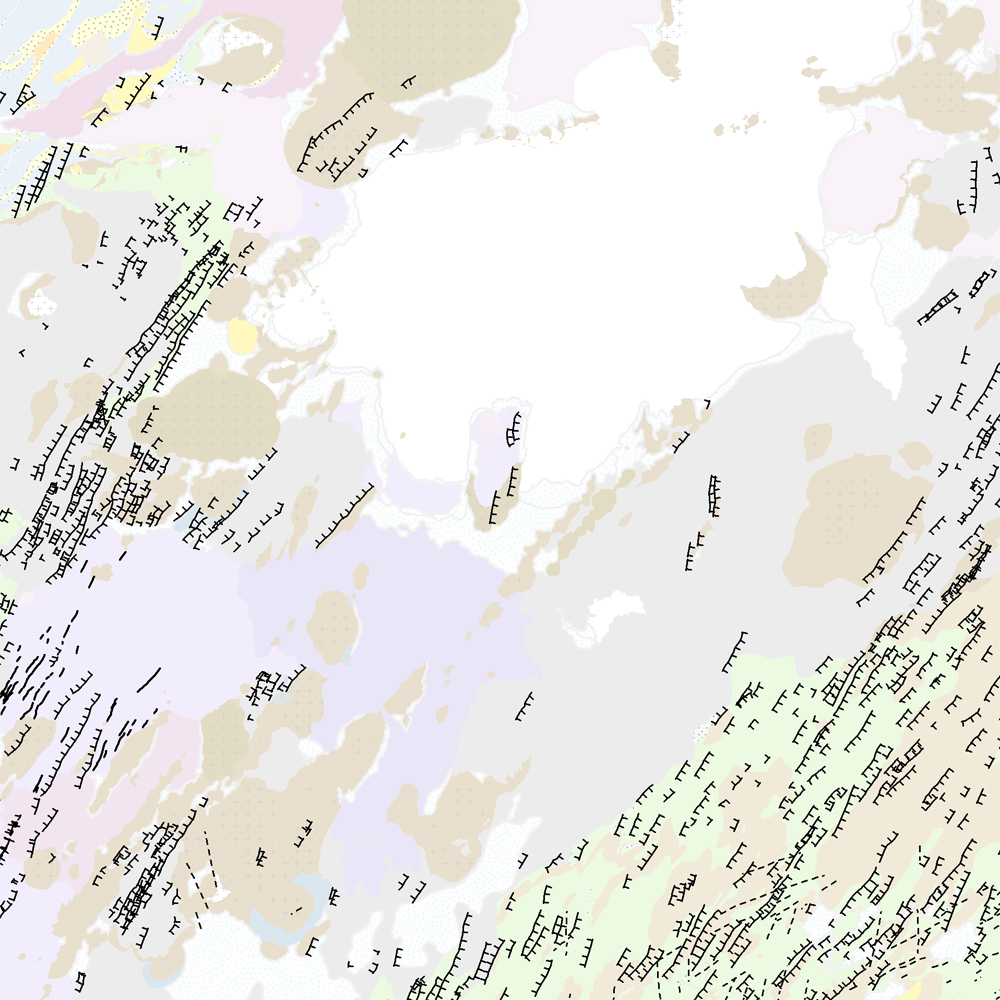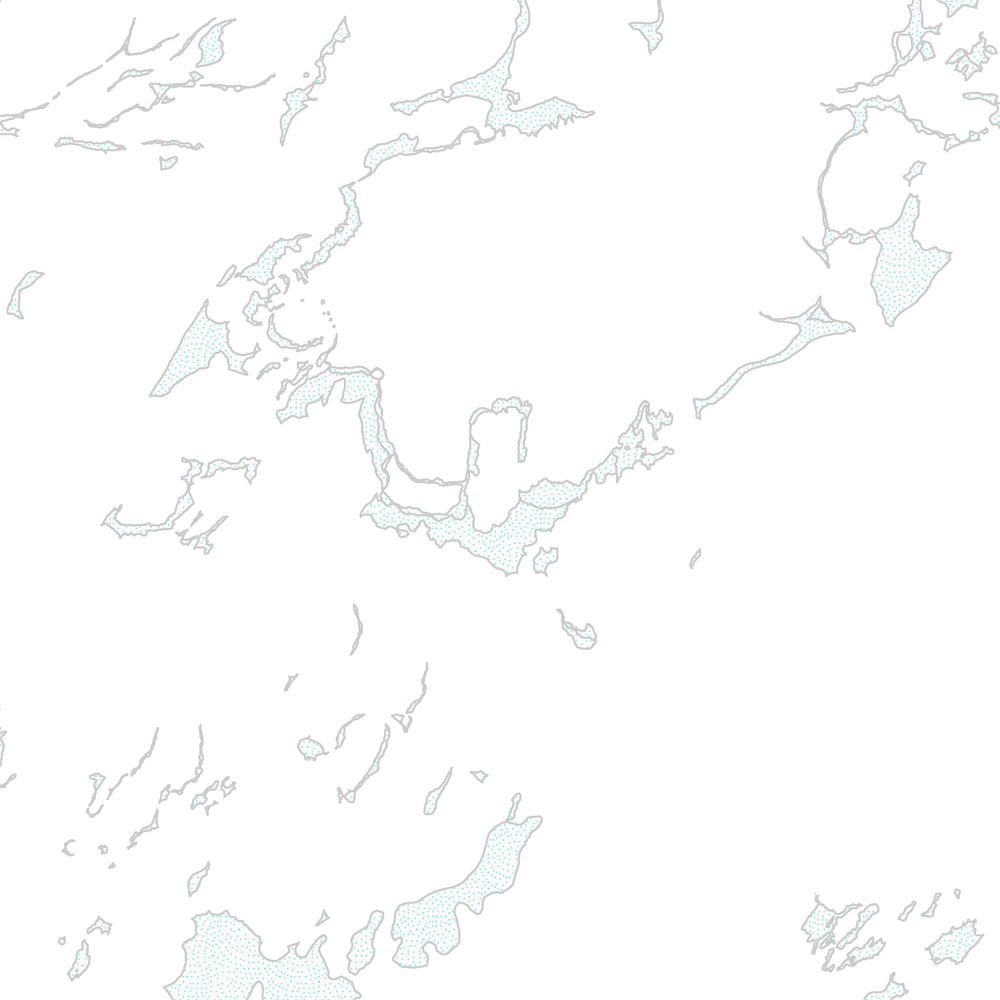asNeeded
Type of resources
Available actions
Topics
INSPIRE themes
Keywords
Contact for the resource
Provided by
Years
Formats
Representation types
Update frequencies
status
Scale
Resolution
-

Þekja [layer] j100v_vesturgosbelti_berggrunnur_1utg_fl: Gögn fyrir berggrunn ásamt nútímahraunum. [Data showing the bedrock geology, including Holocene lavas.] Berggrunnur er flokkaður eftir aldri, gerð og samsetningu. Gögn eru flokkuð eftir ÍST120:2012 staðlinum, nema fitjueigindir: myndunKodi = stuttur kóði sem táknar gerð bergmyndunar, myndunIS = stutt íslenskt heiti fyrir bergmyndun, myndunEN = stutt enskt nafn á bergmyndun, eldstodNafn = nafn eldstöðvakerfis, kenni = stuttur kóði fyrir hlýskeiðishraun og nútímahraun, aldur = aldursbil, Nýr kóði fyrir fitjueigindina 'Tegund storkubergs' (tegStorkubergs): dbas = dílabasalt. [Bedrock is classified by age, type, and composition. The data follows the ÍST120:2012 data standard with these additional feature attributes: myndunKodi = short code denoting the rock formation type, myndunIS = short Icelandic name for rock formation, myndunEN = short English name for rock formation, eldstodNafn = name of the volcanic system, kenni = short codename for interglacial and postglacial lavas, aldur = age range. New code for feature attribute 'Tegund storkubergs' (tegStorkubergs): dbas = porphyrytic basalt.]
-

Akkeri og baujur og áætlaðar staðsetningar fyrir búnað í sjókvíaeldi.
-

Gagnasafn (GDB) NI_G1v_lupina_3.utg: Útbreiðsla alaskalúpínu á Íslandi, 3. útgáfa. [Nootka lupin coverage of Iceland, 3rd edition.] Endurskoðað kortlagningu á útbreiðslu alaskalúpínu á landinu, flákalag. Alaskalúpína (Lupinus nootkatensis), sem skilgreind er sem ágeng, framandi plöntutegund hér á landi, er orðin mjög útbreidd og þekur víða stór svæði. Hún veldur miklum breytingum á náttúrufari þar sem hún breiðist um.
-

Þekja [layer] j100v_vesturgosbelti_berggrunnur_1utg_li: Línur sýna viss og óviss mörk berggrunns og hraunjaðars ásamt hrauntröðum. [Lines showing certain and uncertain boundaries of bedrock and borders of lava fields, including lava channels.] Mörk tilheyra flákagögnum 'ni_j100v Berggrunnur á Vesturgosbelti – 1:100.000' (þekja j100v_vesturgosbelti_berggrunnur_1utg_fl). Nýr kóði fyrir fitjueigindina 'Jarðmyndun og landmótun lausra jarðefna' (jardmLandmJardefna): hram05 = hrauntröð brún. [Boundaries follow the polygon data 'ni_j100v Berggrunnur á Vesturgosbelti – 1:100.000' (layer j100v_vesturgosbelti_berggrunnur_1utg_fl). New code for feature attribute 'Jarðmyndun og landmótun lausra jarðefna' (jardmLandmJardefna): hram05 = lava channel edge.]
-

Vefþjónustan inniheldur upplýsingar um hættusvæði, jafnáhættulínur og mörk hættumetins svæðis fyrir nokkra þéttbýliskjarna. Nánari upplýsingar fást á vef VÍ (https://www.vedur.is/ofanflod/haettumat). Útgefið hættumatskort gildir ef misræmi er á milli þess og vefþjónustunnar.
-

Þekja [layer] j100v_vesturgosbelti_hoggun_1utg_li: Höggun á Vesturgosbelti Íslands, línulag. [Tectonic of the Western Volcanic Zone Icelands, line features.] Gögn sýna sprungur, misgengi, gjár, mislægi og brotalínur, kortlagt í mkv. 1:100.000. [Tectonic line features such as faults, fractures, fissures, unconformity, and fracture lines mapped at 1:100,000 scale.]
-

Í gögnunum er að finna upplýsingar um staðsetningu og umfang verndarsvæða í byggð sem ráðherra hefur staðfest í samræmi við lög nr. 87/2015 um verndarsvæði í byggð. Markmið laganna er að stuðla að varpveislu og vernd byggðar sem hefur sögulegt gildi.
-

Þekja [layer] j100v_vesturgosbelti_jardgrunnur_1utg_fl: Jarðgrunnsgögn af Vesturgosbelti Íslands. [Surface deposits of the Western Volcanic Zone of Iceland.] Laus setlög, svo sem jökulgarðar og árset. [Unconsolidated sediments including glacial morianes and river sediments.]
-

Gagnaset (data set) ni_vg25r_3utg: Vistgerðir á Íslandi: land (Habitat types of Iceland: terrestrial). Vistgerðakortið sýnir útbreiðslu landvistgerða á Íslandi. Alls hafa verið ákvarðaðar 64 vistgerðir á landi og skiptast í 12 meginflokka (vistlendi). Innan landvistgerða eru fjórar jarðhitavistgerðir sem finnast á háhita- og lághitasvæðum landsins. Landvistgerðum er skipt upp í tvö þrep. Við skilgreiningu og flokkun vistgerða á Íslandi var tekið mið af EUNIS-flokkunarkerfinu (European Environment Agency 2012) . Í 3. útgáfu vistgerðakortsins 2024 eru eingöngu landvistgerðir endurskoðaðar. Náttúrufræðistofnun Íslands leggur með ritinu Vistgerðir á Íslandi fram tillögur að flokkun vistgerða sem á sér fyrirmynd í samræmdri og viðurkenndri flokkun vistgerða í Evrópu. Flokkunin byggir á rannsóknum víða um land með fyrirvara um að bæta mætti í þá þekkingu. Athuga skal að aðgreining landvistgerða með fjarkönnun reyndist erfið, bæði fyrir lítið grónar vistgerðir sem og vel grónar, einkum innan vistlenda. Því má búast við verulegum skekkjum þótt þær séu mismiklar eftir vistgerðum. Nánari útlistun og mat á skekkjum má finna í aðferðalýsingu og á staðreyndasíðum vistgerða í ritinu „Vistgerðir á Íslandi“. Frekari upplýsingar um flokkun og skilgreiningu vistgerða má sjá í ritinu: Jón Gunnar Ottósson, Anna Sveinsdóttir og María Harðardóttir, ritstj. 2016. Vistgerðir á Íslandi. Fjölrit Náttúrufræðistofnunar nr. 54. 299 s. og á vef Náttúrufræðistofnunar.
-

Gagnaset (data set) ni_vg25v_1.1utg: Vistgerðir á Íslandi: ferskvatn og fjörur (Habitat types of Iceland: freshwater and littoral shores). Vistgerðakortið sýnir útbreiðslu ferskvatns- og fjöruvistgerða á Íslandi. Alls hafa verið ákvarðaðar 17 vistgerðir fyrir ferskvatn og 24 vistgerðir fyrir fjörur. Ferskvatnsvistgerðir skiptast í tvö þrep, en fjöruvistgerðir í fimm þrep. Við skilgreiningu og flokkun vistgerða á Íslandi var tekið mið af EUNIS-flokkunarkerfinu (European Environment Agency 2012) . Landupplýsingaþekjan fyrir jarðhita, ferskvatns- og fjöruvistgerðir er á vektorformi. Vektorþekjurnar eru flestar flákaþekjur, en fyrir ferskvatn er einnig línu- og punktaþekja. Gögn fyrir stöðuvötn (vg2 = V1) eru fjarlægð tímabundið úr niðurhalsþjónustu vegna ágreinings um grunnkort Loftmynda ehf. en þekjan er sýnileg í kortasjá. Náttúrufræðistofnun Íslands leggur með ritinu Vistgerðir á Íslandi fram tillögur að flokkun vistgerða sem á sér fyrirmynd í samræmdri og viðurkenndri flokkun vistgerða í Evrópu. Flokkunin byggir á rannsóknum víða um land með fyrirvara um að bæta mætti í þá þekkingu. Frekari upplýsingar um flokkun og skilgreiningu vistgerða má sjá í ritinu: Jón Gunnar Ottósson, Anna Sveinsdóttir og María Harðardóttir, ritstj. 2016. Vistgerðir á Íslandi. Fjölrit Náttúrufræðistofnunar nr. 54. 299 s. og á vef Náttúrufræðistofnunar.
 Lýsigagnagátt
Lýsigagnagátt